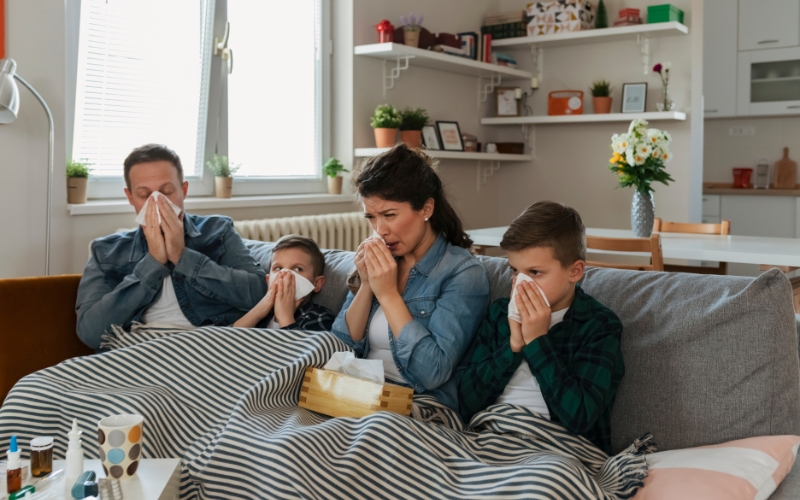When thinking about academic excellence, we tend to focus on things like curriculums, teacher-student ratios, and other advancements in technology. But that ignores another very important issue in education – indoor air quality (IAQ). The air that is breathed by staff and students alike has an impact on cognitive abilities, concentration levels, and overall well-being. Because of this, IAQ and Indoor Environmental Quality (IEQ) merits more attention from educators, policymakers, and the general public.
Understanding Indoor Air Quality and Indoor Environmental Quality
IAQ and IEQ refers to the state of the air within buildings and structures. In particular, it concerns the health and comfort of its occupants. In educational settings, it’s impossible to overstate the significance of IAQ. Just like we spend 90 percent of our time indoors, our students spend so much of their formative years inside classrooms. That means the air they breathe plays a big role in their learning experience.
The Health Ramifications of Poor Indoor Air Quality on Education
Respiratory Issues
Poor IAQ has been proven to lead to various respiratory issues, such as asthma and allergies. Contaminants like mold, dust mites, and volatile organic compounds (VOCs) can and often do trigger or worsen these conditions. Without ever getting into the mental impact, exacerbating these issues can hinder students’ ability to focus and actively participate in their classrooms.
Fatigue and Discomfort
Inadequate ventilation and high levels of pollutants can result in fatigue and discomfort. That stops students from being able to be engaged in lessons. It can also lead to decreased motivation, which can have a negative impact on overall academic performance.
Increased Absences
Exposure to these pollutants that can impact students (and teachers) leads to a higher rate of absences. As we said previously, poor IAQ is linked to a host of respiratory issues, and those can be a cause for more sick days than if the IAQ was taken care of properly. The National Center for Education Statistics had a study years ago indicating that absenteeism led to issues in performance in reading, math, and general knowledge in later years. Additionally, high school dropouts have bene found to exhibit higher levels of absenteeism throughout their childhood than those who graduated high school. And while teachers being absent doesn’t impact graduation rates, simply not having the educators in place regularly impacts learning as well.
The Cognitive Impact of Poor Indoor Air Quality on Education
Reduced Cognitive Function
Studies have indicated that increased exposure to high levels of indoor air pollutants can impair cognitive function. Concentration, memory retention, and problem-solving skills all can be compromised with exposure, which plays a role in hindering the learning process. A study from 2021 on the impacts of indoor air quality on cognitive function found that responses slowed significantly with reduced indoor air quality.
Negative Impact on Academic Performance
A recent study has shown that poor indoor air quality is associated with slower response times. That can have an impact when it comes to grasping new concepts, which can lead to lower test scores and academic achievement.
Attention and Focus
VOCs can impair attention and focus. It’s no secret why this is an issue in a classroom setting. In order to both absorb and retain information, both attention and focus are vital.
While the impact of poor indoor air quality on education may be subtle, the long-term ramifications are anything but. Recognizing the importance of cleaner air and surfaces in learning environments is key. It’s the first step toward ensuring that students have the best chance at academic success. This is where Synexis and the patented Dry Hydrogen Peroxide (DHP®) technology can come into play. Our devices are at multiple education facilities around the country.
“Since we installed the Synexis devices, many of our staff have commented they can tell a difference in the air quality, especially in our older buildings,” said Matt Thomsen, Superintendent, USD 245. “With Synexis Dry Hydrogen Peroxide (DHP) technology, we’ve added an extra layer of defense allowing students to focus on their education and teachers to continue instruction without distraction.”
This story is echoed among so many other Synexis customers in the education industry, along with so many others. With the technology proven to fight viruses like Covid-19, Influenza and Norovirus along with bacteria such as C. diff, E. coli and more, it’s the perfect option to help mitigate the health and cognitive issues associated with poor indoor air quality in educational settings.
To speak with an IAQ expert from Synexis, fill out this form and we’ll be in touch as soon as possible.
To learn more about Synexis, click here.







